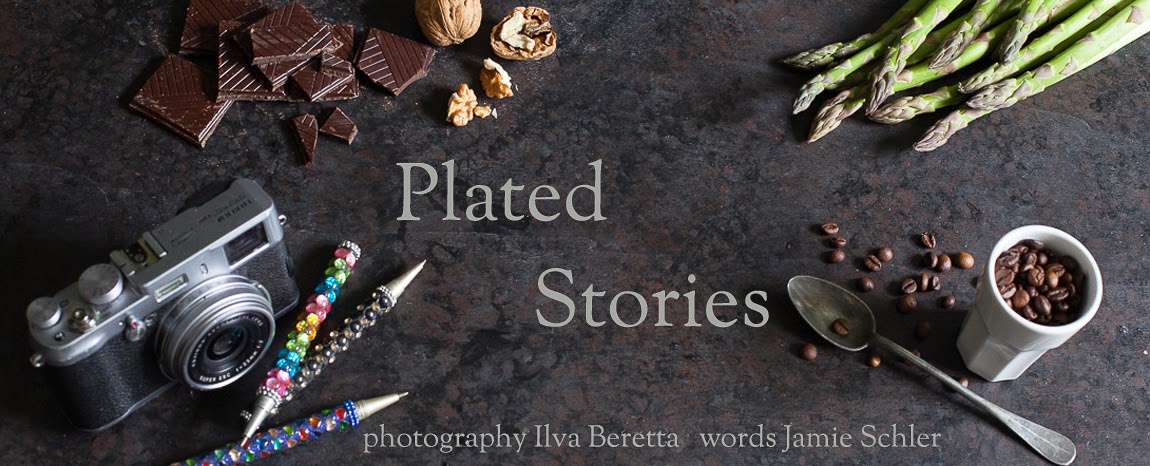A Gift in Wood and Cast-Iron
I hefted the cumbersome object waist high, needing two hands gripped around the handle to lift it off the tabletop. Grabbing it halfway down the interminable length of wood and metal – much too long – and lifting it off the table, arms pressed against my body for leverage, I was stunned at the sheer weight of the thing; this is not merely lifting an object, this is grappling with something inconceivably overweight, staggeringly bulky. But I had fallen in love and knew that from that day forth I would carry it with me, a talisman, no matter how awkward or difficult, wherever I went.
My first skillet.
This old orange and black Le Creuset skillet was and would ever be more than simply a cooking utensil. It meant acceptance into my new family. This was a gift – of sorts – from my mother-in-law all of those years ago. Even as I struggled to understand and make myself understood in a language I barely mastered, as I waited for any sign of rejection or discomfort from my very traditional French in-laws because of my differences, as I worried about my every behavior, battling against my very American social impulses, making every effort to not make a dreaded faux pas, embarrassing us all, my lovely mother-in-law somehow succeeded in making me feel welcome and at home. This offer of an old, timeworn, much-used skillet was more profound than she ever realized.
This skillet, passed on to her from her daughter, was simply too heavy for her to lift. So the skillet lay abandoned and neglected in the back of a cupboard. We were just starting out, poor as church mice, and needed all the help we could get. Cooking was our passion, a strong common bond no matter our cultural differences. My mother-in-law, his maman, rifled through her cabinets and offered us what she could: an old marble surface once used to slice cheese in the shop, worn wooden cutting boards with only the faintest of fissures, and a skillet.
It is still with us, twenty-five years of cooking up memories.
Sunday morning. Home. Dad’s pancakes, sizzling butter, a swish of thick creamy batter in imperfect rounds. Eggs over easy, as American as apple pie; the sharp crack of an egg or two on the smooth, dark edge of a skillet. A side of cornbread. Morning as the sun breaks through the window, splashing across stovetop and table. The comfort of home and kitchen.
Exotic Spanish frittata, whipped up and spicy, golden baked, speckled with festive red and green, onion and mushrooms. Eggs passionate, sexy, with a flick of the wrist, a toss of the skillet. Ambiente festivo!
Spaghetti aglio, olio e peperoncino ! A twirl around Italy, salty, earthy, hot and steamy. Memories of climbing to the dizzying heights of the Duomo, la Madonnina, the lush green Umbrian countryside, a stroll through rows of Tuscan vines, tiptoeing through ancient stone ruins of the Roman forum. An Italian trattoria in our own kitchen, tossing pasta, heating up an afternoon.
Flash-fried, seared, charred and flambéed. Sautéed, braised and baked. Mexican tortillas, Indian pulao, shakshooka and blintzes. Kotlety and pierogi. And Swedish plättar.
Rustic and familiar, the scent of iron, well seasoned, glistening with years of olive oil and butter rubbed lovingly into the cooking surface. Outside, a delicate web of scrapes and scratches.
Weighty, like an irksome thought or a guilty conscience.
Sunday evenings around an old wooden table for eight, waxy oilcloth, stained and burned, the pattern faded from so many years of elbow grease, memories of meals past. Too many dishes, the clatter of cutlery, pressed up against one’s neighbor, the joy of eating. My mother-in-law’s boulettes. Purée de pommes de terre, thick, homey mashed potatoes gathered together in spoonfuls, patted into dense balls, lusciously fried in too much margarine. She drops them one by one into the skillet, tossing and turning in the sputtering grease, until a deep, dark golden crust forms, burned in spots, even better. The children’s eyes light up as each boulette is scraped and scooped from the skillet and meted out, dropped on cheap china plates. Pick off the crust to reveal fragrant creamy potatoes. Childhood delight.
ILVA'S SWEDISH CINNAMON MINI PANCAKES (Plättar)
150 g/5.3 oz AP flour
400 ml/1,7 cup milk
2 eggs
100 g/3.5 oz butter
2 tbsp sugar
pinch of salt
1 tsp cinnamon
Melt the butter; I like it when the butter is a little burnt.
Put half of the milk together with the flour, cinnamon, salt and sugar in a bowl and whisk until smooth, then add the rest of the milk. By doing it this way, it is less likely that you get lumps in the batter.
Add the eggs and whisk until the batter is smooth. Pour the melted butter into the batter and stir and then fry the plättar on both sides, just like you make pancakes.












